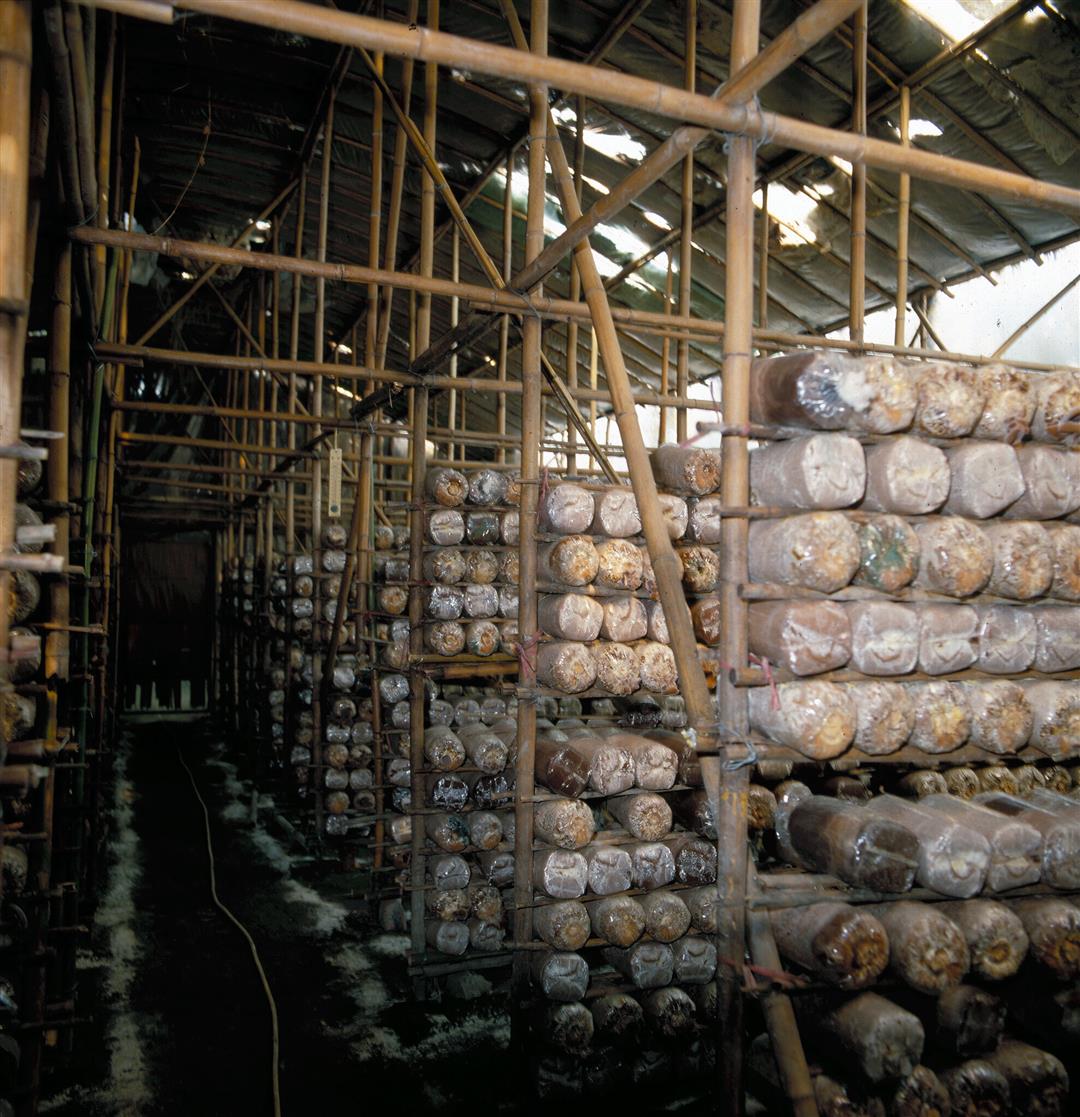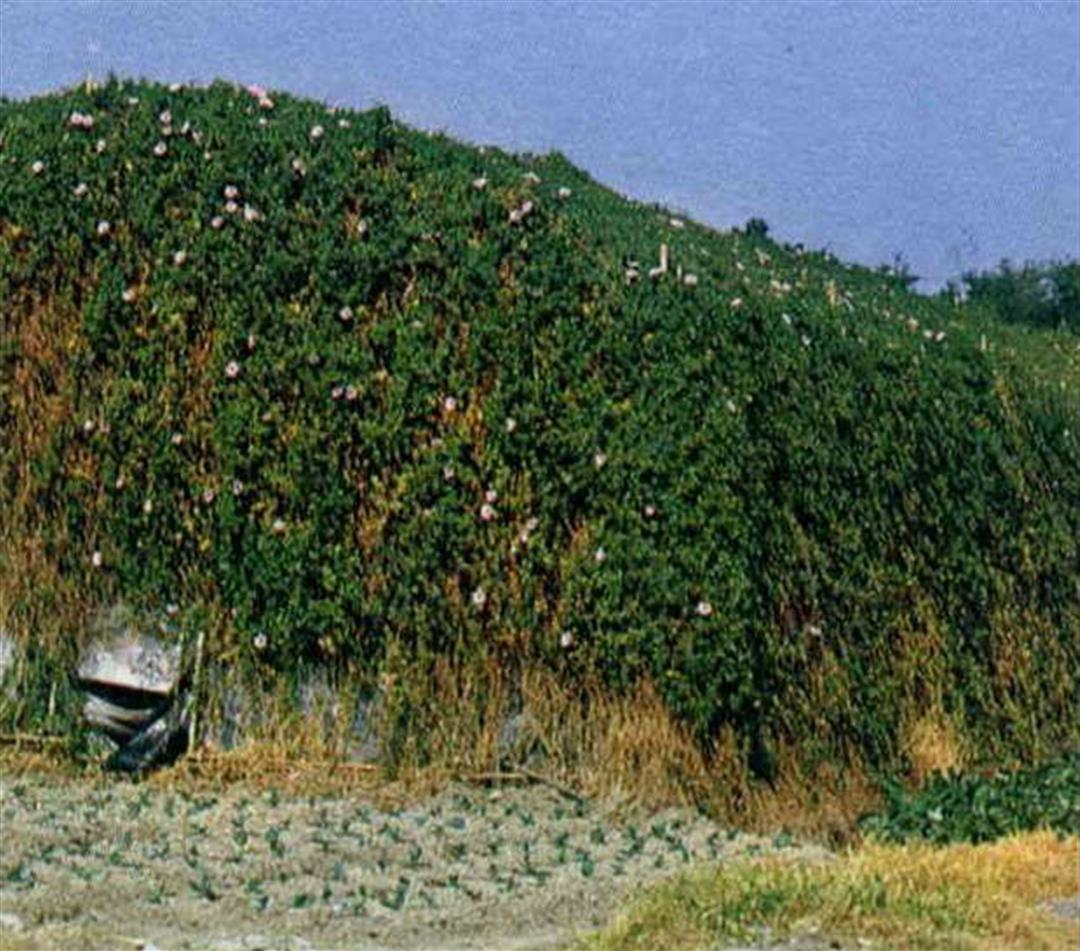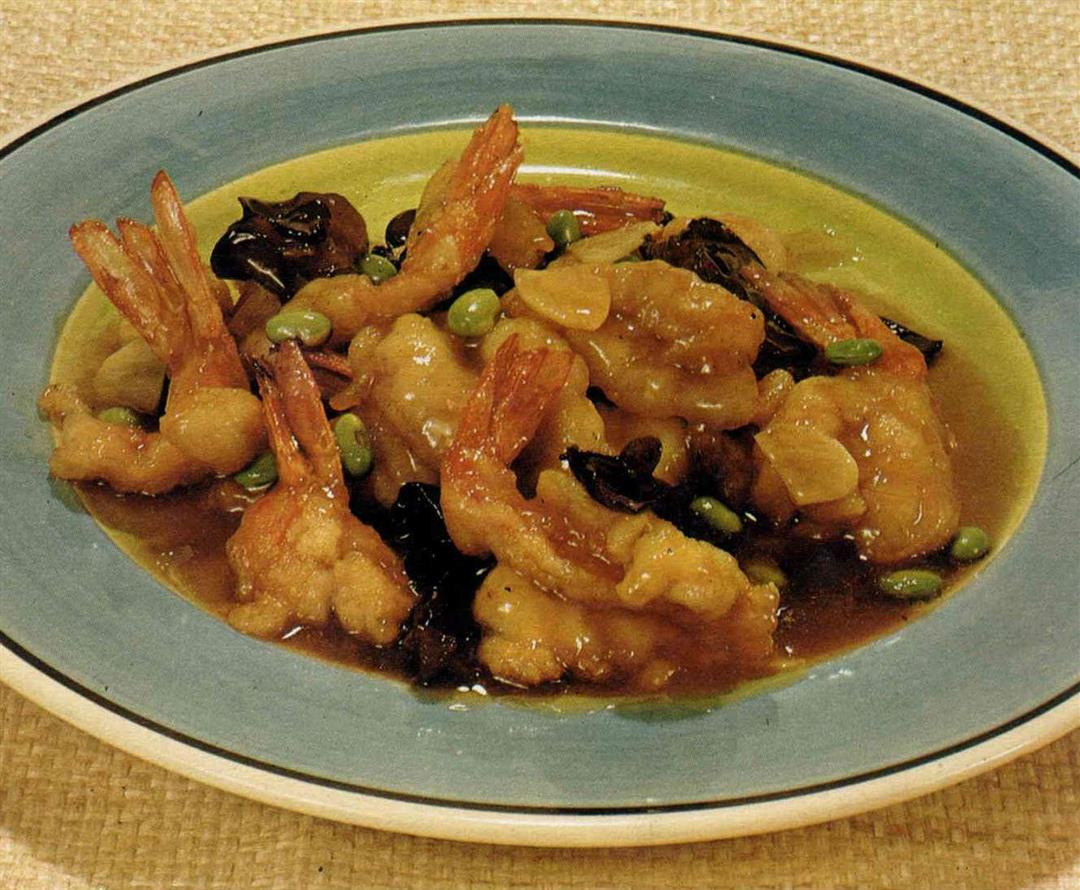As early as the Chou dynasty (1122-221 B.C.), the Chinese people has discovered that a type of fungus popularly known as "tree ears" (Auricularia Auricula-judae) was edible. It acquires its name from its resemblance to the human ear, and its frequent growth on the decaying wood of aging trees.
Today, the tree ear is still an indispensable ingredient in Chinese cuisine. It is used, for instance, fried with prawn slices, with pickled cabbage and pork shreds, or added to sweet and sour soup. It is said that the fungus is good for blood circulation, recuperation after childbirth, spasms, and can be used as a sedative.
Medical analysis shows that the major nutrients in tree ears are lime, carbohydrate, fiber, phosphorus and iron. The phosphorus is particularly important, since it is found mostly in animal bone, and rarely in vegetables. Thus the fungus has become a favorite ingredient in vegetarian dishes, such as those prepared by Buddhist monks and nuns. It is also said to be good for blood circulation in an era when people tend to overeat.
The fungus is found widely in mountain areas, but the wild harvest is small. As a result, artificial production was started some 30 years ago. Tree ear growers at first made holes in logs, added the fungus spores and covered with plastic cloth and straw to ensure ideal humidity and temperature. The amount of harvest, however, depends mostly on the quality of the spores.
As the practice of artificial cultivation spread, the price of the product fell while timber became much more expensive. The resulting small profits caused many farmers to switch to mushrooms.
To reduce costs, farmers first tried to grow the tree ears by placing the fungus spore with sawdust in glass bottles. Later, the glass was replaced with PE plastic, which is unbreakable and much lighter. A new problem which arose, as described by plant pathologist Tu Tze-chiang, was that harmful bacteria could penetrate the plastic bags. To overcome this, a "partial sterilization" technique was used, which involves introducing other bacteria to destroy the ones harmful to the tree ears. In this way, the fungus was protected, and farmers were able to make more profits.
As the method of cultivation improved, the culture medium was also upgraded. Ammonium nitrate, sodium carbonate and flour were added to the sawdust to help increase the harvest.
The farmers' hard work coupled with the assistance of government agricultural institutions and up-to-date techniques introduced by research institutes have combined to put the Republic of China in a leading position in tree ear production. Tu said that local businessmen have been asked to provide technical assistance in Southeast Asian nations. "The tropical climate and presence of many pests make it difficult to cultivate tree ears in Southeast Asian nations. Even so, projects are being launched to grow the crop, including one which Tu himself has supervised in Thailand.
Cheng Hsin-hsiung, who has invested more than NT$1 million (US$28,000) in tree ear cultivation, said that cut-throat competition has forced businessmen to set up automatic production facilities, covering culture, harvest and drying.
Tree ears have been exported to Japan, Southeast Asian nations and other countries and areas populated by overseas Chinese. So far, however, there has been little indication that the food will catch on in the West.
[Picture Caption]
Tree ears are said to be good for the circulation of the blood and an indispensable ingredient in Chinese cuisine. The culture medium for tree ears must undergo high-heat sterilizations before the fungus spore is planted. The plastic bags containing the culture are placed on wooden racks.
The tree ear nursery must be covered with plastic cloth and straw to ensure ideal humidity and temperature conditions. Water must be applied from time to time to ensure the healthy growth of the fungus. Experts in agricultural associations or experimental institutes volunteer to give instructions to farmers. Delicious dishes such as the one shown in the picture, in which tree ears are fried with prawn slices, pork shreds, green beans and other ingredients, are prized by gourmets.

The culture medium for tree ears must undergo high-heat sterilizations before the fungus spore is planted.

The culture medium for tree ears must undergo high-heat sterilizations before the fungus spore is planted.

The plastic bags containing the culture are placed on wooden racks.

The tree ear nursery must be covered with plastic cloth and straw to ensure ideal humidity and temperature conditions.

Water must be applied from time to time to ensure the healthy growth of the fungus.

Began to grow ear capsules.

Experts in agricultural associations or experimental institutes volunteer to give instructions to farmers.

Delicious dishes such as the one shown in the picture, in which tree ears are fried with prawn slices, pork shreds, green beans and other ingredients, are prized by gourmets.